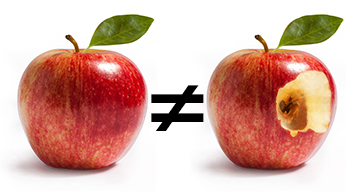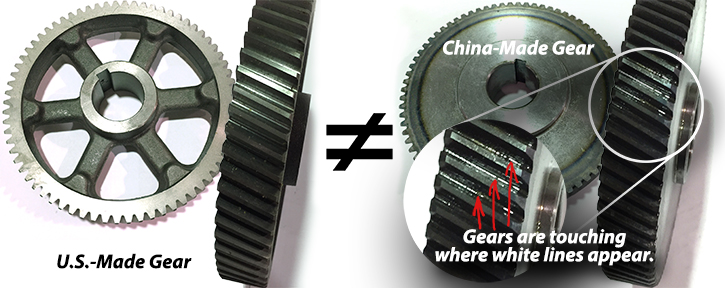Why does a rotary machine need to be swung from side-to-side? A rotary machine has…

1384 Bungalow Rd.
Morris, Illinois, U.S.A.
Why are P/M Machines so expensive?
My usual response is… “Expensive?! Compared to what?”
When I explain the cost differences to those who ask me, I usually focus on the specifications and quality differences between apparently “similar” products. A concrete grinder is just a concrete grinder, right? Wrong!!

Some “apples-to-apples” comparisons should be:
- Horsepower
- Size
- Productive Capacity
- Precision & Quality
The horsepower, size, and productive capacity can all be easily measured and verified; however, precision & quality are a little more difficult to quantify.
While I know it’s impossible to prove how long something will last – it IS possible to predict a product’s durability.
Precision is the Key – the Rotary Gears Should NOT Touch!

The precision of a machine’s moving parts and attachment mechanisms have minimum tolerances that they must adhere to for the smooth, long-term operation they are expected to deliver.
Imagine on a 500 RPM P/M Machine, a gear will spin at 500 times per minute. That would be:
Ӣ 30,000 revolutions per hour
Ӣ 240,000 revolutions per 8 hours
Ӣ 1.2 million revolutions per week
Ӣ 62.4 millions revolutions per year
If a machine is to stand the test of time, precision is the key to this possibility!
The equipment and materials to produce a precision within .001″ (thickness of a human hair) is of the utmost importance. The steel quality and the machine cutting the steel has everything to do with producing such precise products.
The bottom line is that precision is expensive to produce.
Some competitors are using 10-year-old technology (or sometimes even building parts by hand) to produce sub-grade metal or plastic parts that are expected to deliver the same performance for 62 million rotations per year. This just won’t work!
Quality is Necessary
The quality of certain parts is also something that is hard to observe, but very necessary to predicting the longevity of a machine’s performance.
For example, the electrical system must be of a good quality and made to withstand environmental conditions, physical vibration, electrical variations, and continuous use IF it is expected to last. Electrical components made of consistent quality and able to endure continuous vibration and temperature fluctuations do not come cheap. It’s obvious that 1,900 working hours per year requires well built electronics!
Being “Cheap” Now Will Cost You A Lot More in the End
There are other factors to consider about a machine’s quality or value proposition. The above are the main characteristics to consider when comparing a product that appears to be “the same” based on its use, but could really be quite different in its quality.
More often than not, something that is “cheap” will end up costing you a lot more later while something that is “expensive” will end up saving you a lot more later. You decide.
STI is a company that builds equipment to a high quality standard, but we are not the only one doing so. You owe it to your business to do your homework and be sure to compare “apples-to-apples” before buying something that appears to save you money, but really is a huge disappointment waiting to happen.
© Substrate Technology, Inc.
For any clarification of the above or to discuss your unique situation, please do not hesitate to contact STI or any of its authorized dealers for more help and advice. We are all here to supply you solutions that save you time and make you money.
Related Posts
- Why does a rotary machine need to be swung from side-to-side?
- I have scratches everywhere in my polished concrete! Why?
I have scratches everywhere in my polished concrete! Why? There are many possible reasons for…
- Why does a rotary machine need to be swung from side-to-side?
Why does a rotary machine need to be swung from side-to-side? A rotary machine has…